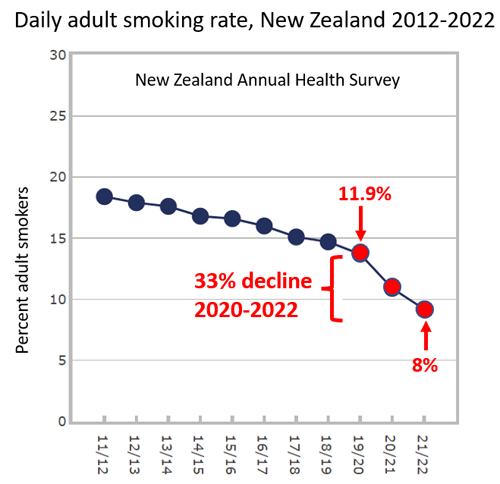
NHMRC statement on vaping seriously flawed – expert review
Posted on February 22, 2023 By Colin
THE NATIONAL HEALTH AND MEDICAL RESEARCH COUNCIL (NHMRC) CEO Statement on electronic cigarettes is riddled with serious scientific flaws and misinformation. The Statement does not meet the high scientific standard expected of Australia’s peak health and medical research body.
This was the conclusion of an analysis published today in the leading science journal Addiction. The article was authored by eleven leading Australian and international addiction scientists from
- Australia: Dr Colin Mendelsohn, Emeritus Professor Wayne Hall, Professor Ron Borland and Dr Alex Wodak AM
- United Kingdom: Professor Ann McNeill, Emeritus Professor John Britton
- United States: Professor Neal Benowitz, Professor Nancy Rigotti
- New Zealand: Professor Chris Bullen, Emeritus Professor Robert Beaglehole
- Switzerland: Professor Jean-François Etter
Some of the more serious concerns are outlined in this 8-minute video and in the text below.
Safety
The NHMRC exaggerates the risks of vaping and fails to compare them to the far more harmful alternative, tobacco smoking. It highlights the presence of chemicals in vapour without making it clear that most of these chemicals are at low or trace level. and below levels that cause harm to health.

It overstates concerns about the long-term risk of vaping. While the precise long-term risk will not be fully known for many decades, it is highly likely to be far less harmful than smoking.
The NHMRC also incorrectly claims that vaping nicotine causes seizures and the serious lung conditions ‘EVALI’ and ‘popcorn lung’ when there is no evidence that vaping causes any of these conditions. It exaggerates the risk of fires and poisoning, both of which are rare.
Effectiveness
The NHMRC Statement wrongly claims that "e-cigarettes are not proven effective cessation aids".
However, the 2022 Cochrane Review concluded that “there is high-certainty evidence that electronic cigarettes are more effective than nicotine replacement therapy”.
An analysis by the UK National Institute for Health and Research concluded that vaping was the most effective single therapy for quitting smoking.
The NHMRC dismisses other evidence that supports these findings, for example from the UK Stop Smoking Services, observational studies, population studies and declines in national smoking rates where vaping is freely available.
Taken together, there is convincing evidence that vaping is an effective quitting aid at an individual and population level.
Uptake of smoking
The NHMRC statement endorses the discredited gateway theory, claiming that vaping causes young people to take up smoking and increases smoking rates. While young people who vape are more likely to try smoking later, there is no good evidence that vaping causes them to become regular smokers if they would not have otherwise done so.
Instead, increased vaping is accompanied by accelerated declines in youth smoking suggesting that vaping is diverting more young people AWAY from smoking than encouraging them to smoke, as this figure from the US demonstrates.

Most youth vaping by non-smokers is experimental and transient. For example, in the United Kingdom, only 1% of 11-15-year-olds who have never smoked vaped once weekly or more.
The public health impact of vaping
The NHMRC Statement dismisses the evidence that vaping is already having a positive net public health effect. The decline in smoking has accelerated since vaping became available.
In New Zealand, after vaping was legalised in 2020, the daily adult smoking rate fell by an unprecedented 33% in two years. In comparison, the smoking rate in Australia declines by about 2% per year.

Vaping is the most popular aid for quitting or reducing smoking in Australia and other western countries. Because of its proven effectiveness and wide reach, vaping is likely to have a far greater population effect than any other strategy.
The precautionary principle
The NHMRC argues that we should not allow vaping because of uncertainty about long-term risks. However, this is a misuse of the ‘precautionary principle’ and will cause more harm. The relatively small risks of harm from vaping will be far outweighed by the more substantial known harms from delaying access to current smokers.
As with all new medicines and consumer products, there is some uncertainty about long-term risks. However, it is well established that up to two-thirds of long-term smokers will die prematurely from smoking. Many of these deaths can be prevented by vaping.
Conflicts of interest and bias
Conflicts of interest and bias by the NHMRC are also a serious concern. Three members of the NHMRC Electronic Cigarette Working Committee have published papers opposing vaping. Other members of the Committee represent organisations which have made strong public anti-vaping statements. Having a strong position on vaping can influence how advocates interpret the evidence to support a pre-determined policy position.
NHMRC Homeopathy report
Another review by the NHMRC has been also criticised as seriously flawed. Formal charges on scientific and ethical conduct and bias by the NHMRC in the preparation of the 2015 report on homeopathy have been filed with the Commonwealth Ombudsman and a review is under way. Ten reasons why the complaint has been made are listed, here. This short video explains further.
Conclusion
In conclusion, the NHMRC document is scientifically flawed, potentially biased and misleads the Australian public on vaping. It fails to meet the high standards expected of a leading health and medical organisation and is not a suitable to guide Australian policy on vaping.
An independent and impartial Australian review of the evidence by a balanced committee is urgently needed.
References
NHMRC CEO Statement on Electronic Cigarettes, 2022
One-page plain English handout on the findings
Go to Top